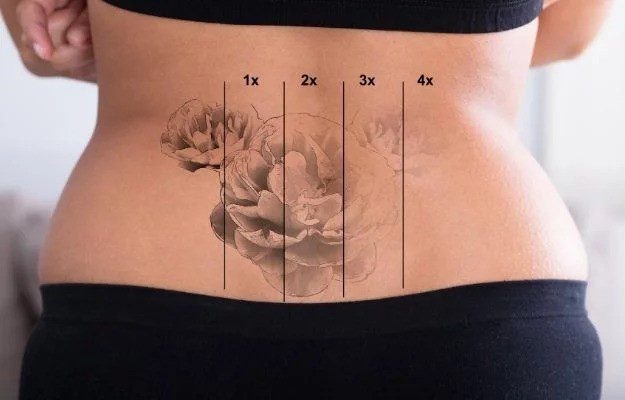Getting a tattoo is often a bold expression of one’s identity, art, or a cherished memory. But let’s face it, people change, and so do their preferences. Whether it’s a misspelled quote, an impulsive vacation ink, or simply a design that doesn’t feel like ‘you’ anymore, many people find themselves thinking: Can I get rid of this? And how long will it take?
Tattoo removal has come a long way, and today’s laser technology makes it safer and more effective than ever. But one of the most common questions people ask is: How many sessions will it take to remove my tattoo completely?
Let’s dive in and talk about what to expect without the sugarcoating…
There’s No One-Size-Fits-All Answer
We know that’s not the most satisfying way to start. But it’s true. Tattoo removal isn’t a set number of visits, and ‘you’re done kind of process.’ The number of sessions can vary depending on several personal and technical factors.
In general, most tattoos require anywhere from 6 to 10 sessions to be removed completely. Some may fade away in as few as 3 sessions, while others may need 12 or more. The process takes time and patience.
What Makes One Tattoo Harder to Remove Than Another?
It might surprise you, but your tattoo’s age, color, location, ink depth, and even your own immune system all affect how many sessions you’ll need.
Let’s say you have a small, black tattoo on your shoulder from ten years ago. Compared to a newer, colorful design on your lower leg that older one will likely fade faster. Why? Because black ink responds better to lasers, and older ink tends to break down more easily. Plus, areas with better blood circulation, like the upper body, often heal faster and flush out ink more efficiently.
Color Me Complicated
Here’s where it gets a little tricky. Not all ink colors are created equal when it comes to removal. Black ink is the easiest to remove, while bright colors like green, blue, and yellow are more stubborn. Different colors absorb laser light differently, so removing a full-color sleeve is going to take longer than erasing a simple black-line tattoo.
Don’t worry, though. Our modern Pico way laser is designed to target even tough pigments more effectively than older technology.
Your Skin Tone and Type Matter Too
Your unique skin tone and type also influence how your skin reacts to the laser and how quickly it heals. Lighter skin generally responds more quickly because the contrast between skin and ink makes it easier for the laser to target pigment. But that doesn’t mean darker skin tones are at a disadvantage – it just means your technician might use a different laser setting or go a bit slower to avoid damaging surrounding tissue.
The goal is always to remove the tattoo safely and evenly, regardless of skin type.
Patience Is Part of the Process
Let’s say your removal plan involves 8 sessions. You might think you can knock that out in 2 months, right? Not quite.
Most clinics recommend spacing sessions 6 to 8 weeks apart. Why the wait? Because your body needs time to naturally break down and flush out the shattered ink particles after each session. Rushing the process can increase the risk of scarring or ineffective results.
So yes, complete removal can take several months to over a year, depending on your tattoo and your body’s response. But each session brings visible progress.
Health and Lifestyle Play a Bigger Role than You’d Think
It might sound strange, but your immune system is a key player in tattoo removal. Laser treatments don’t suck the ink out; in fact, they break it into tiny particles that your body then clears away. So, the healthier and more hydrated you are, the better your results.
Smokers, for instance, tend to see slower fading because smoking can reduce circulation and slow healing. Staying active, drinking plenty of water, and maintaining a healthy lifestyle can all help your body do its job more efficiently between sessions?
Can You Speed It Up?
There’s no safe shortcut, but you can help your skin do its part by following aftercare instructions religiously. Keep the treated area clean, don’t pick at scabs, and avoid sun exposure. Your skin is working hard behind the scenes, and the better you treat it, the better it’ll reward you with faster fading.
If you’re ever tempted by single-session removal services or creams that promise overnight results, be cautious, as these often don’t work, and some can even be dangerous.
